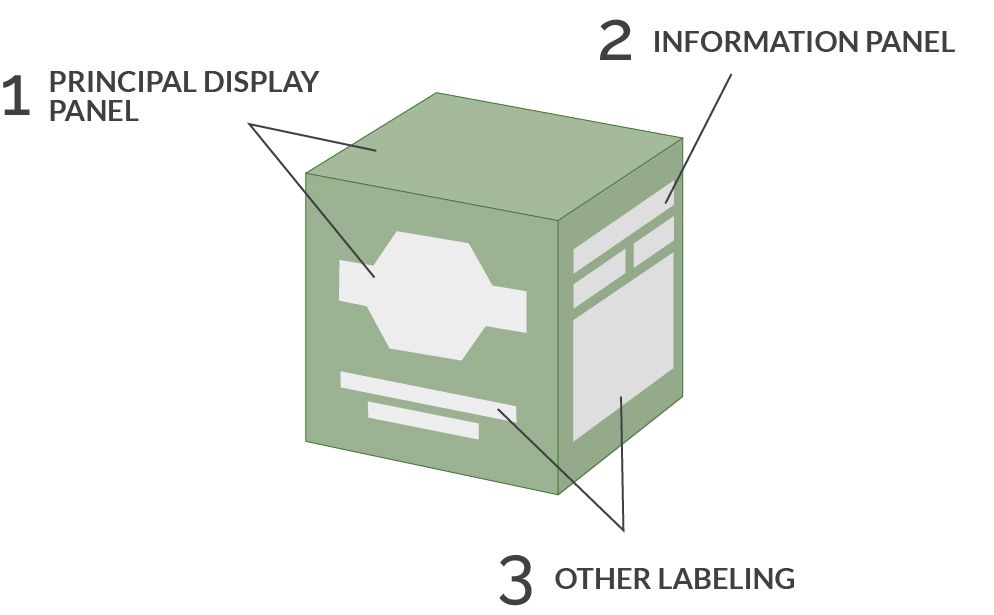What You Need to Know About California Cannabis Labels. On average, companies only have 5 to 10 seconds to attract a customers’ attention before they move one to another product. 10 seconds is all a company gets, that’s the equivalent to checking a notification on your smart phone. With shortening attention spans among generations, it’s crucial now more than ever to create a label the entices and represents a company well. As the cannabis industry grows more brands will join the market, each with their own logos and labels fighting for attention. For new companies entering the market, the standing out on dispensary shelves is what will make or break them. The state of California has specific guidelines and regulations for labels used in connection with cannabis products, they must be followed in order to sell product. The importance of properly labeled product, is to ensure consumers are informed about what they are purchasing and to prevent unintended use. Guidelines apply to all manufactured cannabis and cannabis products labels. and cannabis product.

When it comes to the labels on cannabis products, there are two main panels that California requires all retailers to abide by. The first label panel is the primary panel, which contains three important aspects. This label is what must be displayed to consumers during retail, typically on the front or top of the package. The label must specify the details of the product identity, known as the generic or common name describing the product. Examples of product identity are vape cartridge, lotion, or tincture. Additionally, the primary panel must include the universal symbol in the color black only and be at least 0.5 inches high by 0.5 inches wide. California uses that symbol to identify items containing cannabis. The last requirement is to have the net weight or volume listed both in metric and U.S. customary units. For edible cannabis products only, the label must also include the phrase “Cannabis-Infused”. Those words must be above the product identity in bold font and a text size larger than the one used for product identity.
The second label products must have, is known as the information panel. This is any label on the packaging that is not the primary label. The information panel contains quite a bit of information, including:
(a) manufacturer name and contact*
(b) date of manufacture/packaging*
(c) government warning statement*
(d) UID number* (j) expiration date*
(e) Batch/Lot number
(f) use or preparation instructions*
(g) ingredients including sub-ingredients*
(h) allergens*
(i) artificial food colors* – if applicable
(j) expiration date*
(k) refrigeration if perishable after opening*
(l) sodium, sugar, carbs, and total fat for edible products in milligrams or grams*
Some packaging does not offer enough surface space for such a large label. So how do you get all that information on such a small package? Any of the above requirements from the information panel that have an asterisk (*) by them, may be placed on a supplemental label. Supplemental labels provide additional label space and include hangtags, peel-backs, and inserts. However, there is an important note to make, QR codes, websites and other separated information methods are not an acceptable type of supplemental label. All information needs to be on the packaging at the time of sale.
Lastly, labels must be written in English and in a readable size, that is at least 6-point font. All required labels are to be displayed on the outer layer of packaging. Before you get creative with your label, there are a few things you cannot do when label designing.
LABELS SHOULD NOT INCLUDE
Labels cannot include any of the following: county names, attract children, include false or misleading information, make unproven health claims, include a picture of the product, or be marketed as an alcoholic beverage. County names can only be included if 100% of the cannabis is grown in that county. Since the use of recreational marijuana is for those 21 and older, the label cannot attract children in any way. Including the use of cartoons or images used to advertise to children. Labels cannot imitate candy wrappers or use the words “candy”, “candies”, “kandy”, “kandeez”, or any other variation of the word. False or misleading information is anything that is untrue or unproven leading consumers to inaccurate impression of the substance. Additionally, the word ‘organic’ may also not be included. Unless there is significant scientific agreement and claims are supported by totality of publicly available peer-reviewed evidence health related statements are not allowed. In order to protect the youth, edible cannabis products cannot include a picture of the product as it might entice children. Edibles must be kept in opaque packaging. The Bureau of Cannabis Control regulations §5041.1 has more information on the label restrictions regarding alcoholic beverages and marijuana.
Now that the basic understanding of California label laws has been discussed regarding the recreational cannabis industry, it’s time to get creative. Remember companies only have 10 seconds to captivate their audience and make a first impression. Need help creating a design that will be successful and make you stand out? Contact THC Solutions, their team of graphic designs can create one of a kind logos and labels. You will receive the pristine quality that will blow the competition away. Visit THC Solutions today for all labeling needs.
PROP 65
Additional requirements include Prop 65 warnings when applicable. – Proposition 65 requires businesses to provide a clear and reasonable warning before knowingly and intentionally exposing anyone to chemicals that are known to the state to cause cancer, birth defects, or other reproductive harm. For more information on Prop 65 and applicable requirements, visit https://oehha.ca.gov/propositon-65.
CRV Recycling (for beverages, if applicable) – Beverage manufacturers are responsible for labeling qualifying beverage containers with recycling information. For more information, visit https://www.calrecycle.ca.gov/bevcontainer.
*THC Solutions provides this document to serve as a guide and not as legal advice. For more information visit the CDPH website for California label requirements at www.cdph.ca.gov/mcsb.

